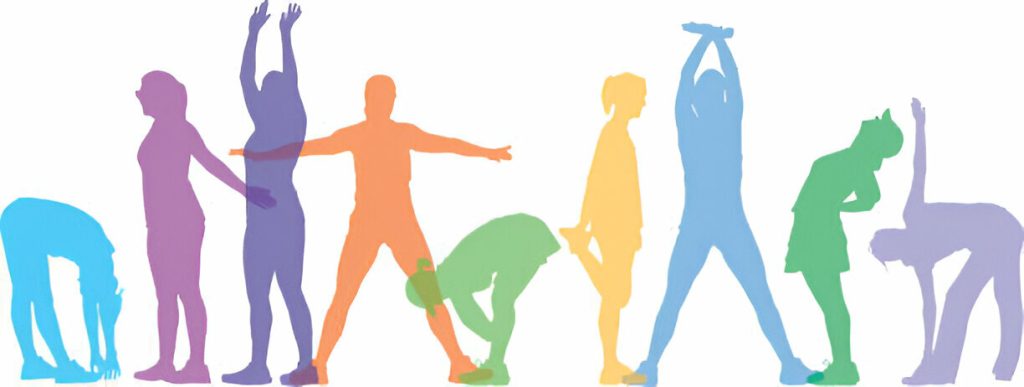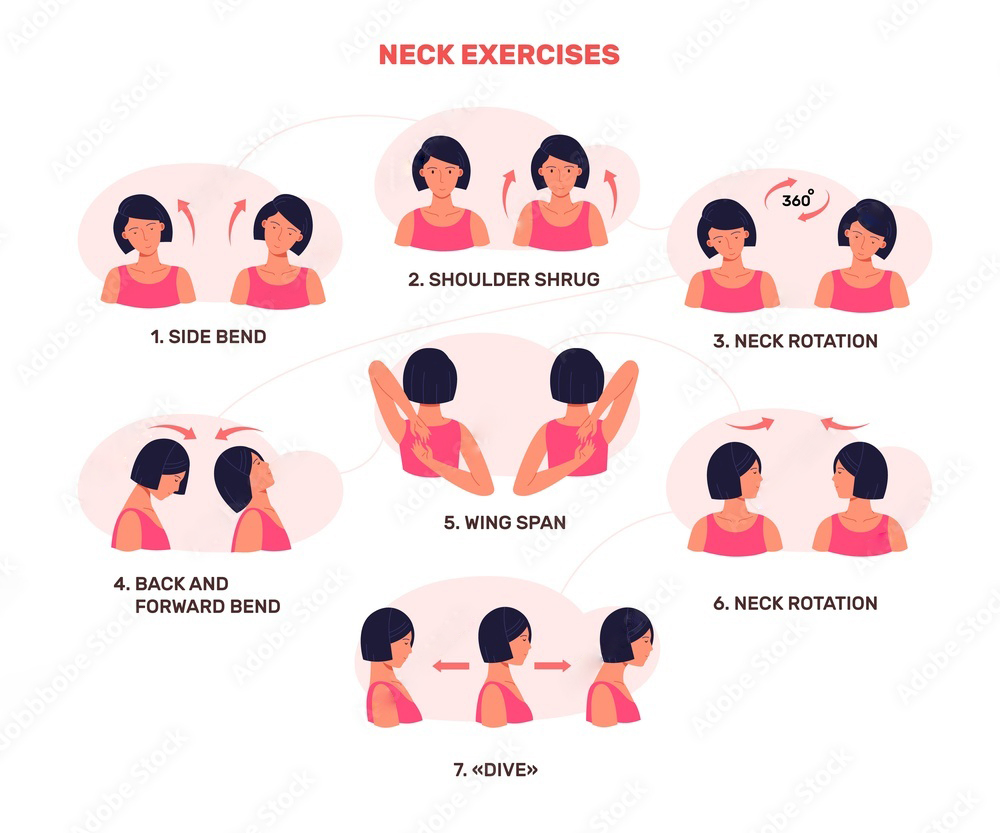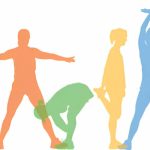
Breaking Barriers: Overcoming Trismus with Simple Neck and Jaw Exercises
- 31 December, 2024
- By Noa

The experience of cancer treatment, particularly concerning head and neck cancers, can be an extremely long trek through life, with its consequences often manifesting in the body and otherwise. One of those side effects that is hardly talked about but considerably affects a person is called trismus, which renders one’s mouth movement limited such that even the most primitive of daily needs such as eating, talking, and even brushing one’s teeth become obstacles in life. For cancer survivors, this introduces both physical as well as emotional hurdles, but fortunately, this is treatable through specialty neck and jaw exercises, thereby often overcoming trismus.
Niramaya Oncology Associates understands how profoundly trismus can affect the lives of cancer survivors. We strive to alleviate human suffering due to suffering and death by offering referral care comprising rehabilitative strategies that aim not only for survival but also for improved quality of life among individuals who endure a battle against cancer. This blog discusses the way targeted simple exercises can relieve individuals from suffering, increase jaw mobility, decrease stiffness, and generally speed recovery.
Trismus-and-its-effects on-cancer-patients
Trismus Defined
More commonly known as “lockjaw,” trismus is a muscle condition whereby the muscles that allow movement of the jaw become stiff or tight and there could even be spasms, so they cannot fully open the mouth, thereby restricting all movements that make it possible to eat, talk, open the mouth or even do some basic cleaning. Such conditions do exist amongst cancer patients after going through radiation therapy or surgery performed within the head and neck area and are aggrieved to them as they act as a bar to daily living for survivors.
As it affects the muscles of the jaw as well as the TMJ (temporomandibular joint), simple tasks become difficult and painful. For instance, eating, talking, or even brushing teeth becomes very difficult when it gets severe to very extreme levels. In very extreme cases, swallowing becomes difficult along with the fear of developing nutritional deficiencies, increasing risks of dental problems, and impairing speech altogether. It, indeed, leaves survivors feeling frustrated, isolated, and burdened with physical deprivation through the post-cancer recovery stages.
Contributions of Cancer Treatments: Trismus Development
Two major cancer treatments bring on the occurrence of trismus:
radiotherapy and surgery. Radiation directed at the head, neck, and oral cavities may damage the muscles, soft tissues, and TMJ and may even lead to stiffness and limitation of movement. Surgery dealing with, for example, tumor or lymph node excision, may also impact directly on jaw movement, in that it may compromise muscles or nerves that control jaw function. These two modalities of treatment may work differently: radiation may affect the general bulk of mastication muscles, while surgery may directly cause limited mouth opening accompanied by pain or discomfort.
How do Exercises for the Neck and Jaw Recover from Trismus?
Targeting the Right Muscle Groups
Neck and Jaw exercises work on the muscles responsible for jaw movement and those other muscles adjacent which may have become stiff or weak after cancer treatment. They aim at improving flexibility, reducing muscle tightness, or increasing the range of motion. Patients can restore proper jaw function and ease discomfort due to trismus by gradually engaging the muscles in a controlled manner.
Trismus exercises focus on the masseter, temporalis, and pterygoid. These are important muscles concerning chewing and movement of the jaws. Apart from these, neck exercises are very important to help solve any stiffness, tightness, or discomfort along the cervical spine that indirectly affects jaw function. This brings a holistic approach towards relieving trismus and restoring normal jaw motion.
Relieving Pain and Reducing Inflammation
When trismus occurs, muscles around the jaw and neck swell and develop aches. Regular exercise, especially gentle stretching and activation of muscles, helps relax inflammation. The stretching strengthens muscles, and where the stiffness is, the pain reduces, and the survivors of cancer go back towards greater comfort with ease of movement.
Exercises also improve blood flow into the body parts in need of healing treatment and reduces the chronic muscle tension caused by injury. This, of course, relieves all sorts of bodily pain and also gets quite instrumental for the survivors emotionally. The victim believes they can now take charge of their recovery, have a say in their own healing process, and interrupt the locus of healing from the unfamiliar clinical environment of the caregiver. It gives them a sense of control over the process and the outcome.
Simple Exercises to Relieve Trismus
Jaw Stretching Exercises
How far the mouth will open is one of the primary determinants of whether trismus is overcome or not. One of the basic examples of exercises is to stretch the musculature around the jaw by placing your thumb and fingers on either side of the lower jaw and opening the mouth. Any stretching should be done slowly, about 5 to 10 seconds holding the position before releasing. This will give an overall aspect of gradually increasing range of motion in the jaw and give a wider capability to the survivors to open their mouths while lessening the tension occurring within.
Gradual Jaw Opening Exercise:
Place your thumb under your chin and put your index and middle fingers on either side of your lower jaw. Gradually open your mouth so wide without feeling a sharp pain. Hold in this position for 5 to 10 seconds, with a repeat of 5 to 10 times, and gradually increase duration as comfort allows.
Resistance Exercises for Jaw Muscles
Another very effective modality of exercising the jaw muscles is resistance training. This exercise consists of applying mild counter-resistance while either opening or closing the mouth. Place your thumb under your chin or at the top of your lower jaw, then try to open or close your mouth while supplying a slight counter-pressure with your thumb. Strengthening and endurance are developed in the jaw muscles with this exercise.
Jaw Resistance Exercise:
- Place your thumb under your chin or on the lower jaw.
- Try to open your mouth against the resistance of your thumb.
- Hold for 5 seconds and relax.
- Repeat 5 to 10 times while gradually increasing resistance.
Neck Stretches and Range of Motion Exercises
This neck extension is very pleasurable, considering that it will relieve trismus by the stiffness in the neck. It would involve gentle bending from side to side, forward and backward, turning the neck, and combined sets of movements in circular motion. Muscle spasms in the cervical region and flexibility might be reduced tension.
Neck Stretching Exercises: Place oneself either sitting or standing in a relaxed position with shoulders dropped. Slowly tilt the head toward the shoulder right side then left, holding for a count of 10 minutes. Gently rotate the head left and right, 5 seconds each time of rotation. Repeat on both sides 3 to 5 times.
Massage Techniques for Jaw and Neck: These lead to tension relief and pains by massaging muscles around the jaw and neck. A gentle massage of the fingertips creates stimulation for blood flow into the areas for relieving stiffness in muscles.
Jaw and Neck Massage:
- With your index fingers, use it to massage in a gentle circular motion the sides of your jaw, and the base behind your neck.
- Attend more to where the tension is most felt.
- Massage for 5 to 10 minutes every day to relieve stiffness while improving blood circulation.
Why Early Exercise is Key to Managing Trismus
Prevention of Further Complications-
The earlier you can integrate neck and jaw exercises into post-treatment care, the better for avoiding further complications related to trismus. Untreated trismus results in permanent shortening of muscle fibers and an inability to move the jaws. Timely intervention, especially in the week or weeks or months after cancer treatment, can prevent setbacks and allow survivors to regain complete or almost complete functionality of their jaws over the long term.
Early Recovery Advancement Early recovery exercise will be much faster and better by engaging in exciting early after a recovery period. Survivors benefit from active physical therapy or exercises, bringing them tremendous mobility improvements and significant pain relief. Surgery or injections may then be avoided later on for treating trismus in some cases.
Conquering Barriers to Exercise for Relief from Trismus
Moderating Physical Discomfort
For many survivors, it seems quite impossible to exercise because of the pain or discomfort associated with trismus. Writing little by little, taking heed of the ensuing exercise, should never be a cause for great pain. To this extent, survivors have been advised to make the exercises easier or to change things if they experience pain from doing them.
In the Best Interests of Developing a Good Environment
Having friends, family, or friends as a support system can greatly enhance the chances of sticking to the exercise routine. Motivation is quite hard for cancer survivors, so a wink from your loved ones goes a long way in keeping them on track. Moreover, however, working with the rehabilitation specialist ensures that exercises are done in the right and effective way.
Safety Precautions Following Treatment During Jaw and Neck Exercises
- Gradual Advancement
When it comes to exercise, it is imperative that one start off with gentle low-intensity stretches, and then advance slowly to the higher levels. Overdoing it or over-enthusiasm in starting can result in injury and increased pain in the affected area. A gradual method allows for both muscles and joints to attune themselves without strain.
- Consistency
Daily exercises for a number of days a week would yield good results when caught in trismus. It is all about maintaining consistency. Regularity helps embed memory and create better flexibility and strength in muscles over time.
- Avoid Overextending Yourself
Everyday exercises are not an exception to this glut of advice; that is why you must not push it by going through the pain barrier. When the exercise experienced feels sharp or intolerable, stop and report to health care providers. Make alterations in exercise or avail time for recuperation.
Long-Lasting Gains from Exercises for Recovery from Trismus
Further Improvement in the Function of the Jaw
With consistent practice in neck and jaw exercises, eventually, the patient will notice a very slow increase in jaw mobility. Full or near-jaw functioning is the aim, thereby enhancing the ease of eating and speaking, as well as general quality of life.
Trismus Exercises for Less Pain and Increased Comfort:
Trismus exercises should help relieve pain associated with trismus by strengthening the jaw muscles and improving blood circulation. In the long run, the most important thing that survivors feel, perhaps, is that they have experienced less tension in their jaws as well as greater movement possibilities.
Increased Emotional Well-Being:
Physical well-being and emotional well-being are very closely interrelated. When the trismus is under control and the jaw is being restored to function, it allows for the gaining back of independence and empowerment for survivors. This added emotional effect lives on as an important element of recovery.
Overcoming Trismus-Like Pain in Cancer Survivors
For many people with cancer, this trismus makes it even more difficult for them to manage their lives. It is not immovable, however, because one can easily take short exercises for one’s neck and jaw, break through the stiffness in one’s jaws, and accelerate recovery. Whether through gentle stretching, resistance exercises, or neck mobilizations, these offer great long-term benefits.
Niramaya Oncology Associates will continue to be a resource and ally for cancer survivors walking their healing journeys, helping them regain physical functionality and improved quality of life and face challenges such as those of trismus. Early intervention, determination, and appropriate rehabilitation techniques may manage and help lead full lives even after trismus.
